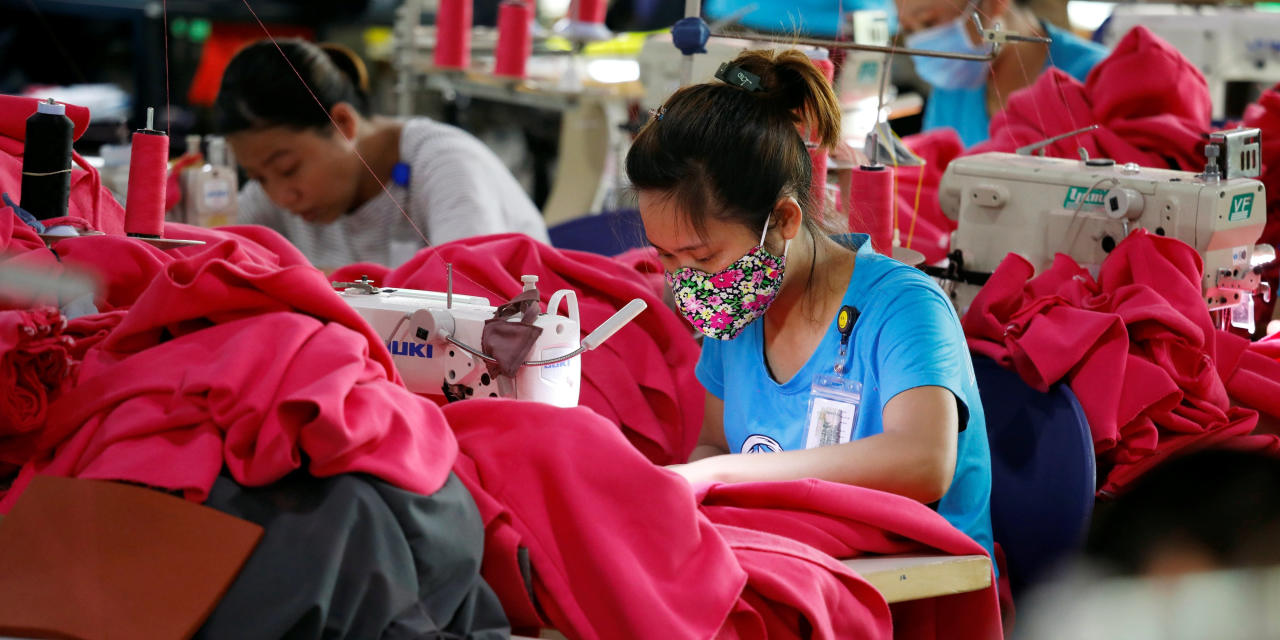Will Reshoring Initiatives Bring Back Factory Jobs To The US? The Reality Check.

Table of Contents
The Allure of Reshoring: Why Companies are Considering It
Several powerful forces are driving the current reshoring trend. Companies are no longer solely focused on minimizing labor costs; other critical factors are pushing them towards domestic production.
- Rising Overseas Costs: Labor costs and transportation expenses in traditional manufacturing hubs like China and Southeast Asia are steadily increasing, eroding the cost advantage they once held. This makes US-based manufacturing increasingly competitive.
- Supply Chain Vulnerabilities: Recent global events have exposed the fragility of overly complex, globally dispersed supply chains. Reshoring offers a way to mitigate risks associated with geopolitical instability, natural disasters, and pandemics. Supply chain resilience is a major driver of reshoring strategies.
- "Made in USA" Appeal: Consumers are increasingly prioritizing domestically produced goods, valuing the quality, ethical considerations, and reduced environmental impact often associated with "Made in USA" products. This consumer preference provides a significant market incentive for reshoring.
- Government Support: Various government incentives, tax breaks, and grants are designed to encourage companies to bring manufacturing back to the US. These reshoring initiatives often target specific industries or regions.
- Technological Advancements: Automation and improved technologies, such as robotics and AI, are significantly reducing labor costs in the US, making domestic manufacturing more economically viable. This is a game-changer for reshoring efforts.
Challenges and Barriers to Successful Reshoring
Despite the allure, significant hurdles stand in the way of widespread reshoring. Simply relocating factories isn't enough; overcoming these obstacles is crucial for success.
- Higher US Labor Costs: While automation mitigates this, US labor costs remain significantly higher than in many developing countries. This is a major factor impacting the feasibility of reshoring for some industries.
- Skilled Labor Shortages: A lack of skilled workers in specific manufacturing sectors presents a major challenge. Robust workforce training and development programs are essential to support reshoring efforts. Investing in skilled labor is key to successful reshoring.
- Infrastructure Limitations: Inadequate infrastructure, including energy grids, transportation networks, and broadband access, in some regions of the US can hinder the establishment of new manufacturing facilities. Improving infrastructure is a prerequisite for attracting manufacturing investments.
- Competition from Established Overseas Manufacturers: Overseas manufacturers often possess established economies of scale and operational efficiencies that are difficult to match immediately. New domestic manufacturers face a steep uphill battle in terms of competition.
- Regulatory Compliance: Navigating complex US regulatory requirements, including environmental standards and labor laws, adds to the cost and complexity of reshoring. Streamlining regulations could help boost reshoring efforts.
The Role of Automation and Technology in Reshoring
Automation is a critical factor influencing reshoring decisions. Technological advancements are shifting the economic landscape of manufacturing.
- Automation's Impact: Advanced robotics and artificial intelligence (AI) can offset the higher cost of US labor, making domestic production competitive.
- Increased Efficiency: Automation leads to increased productivity and efficiency, reducing production times and overall costs.
- New Job Creation: While some jobs may be displaced, reshoring driven by automation creates new opportunities in areas like robotics maintenance, software development, and AI integration. These are high-skilled jobs demanding a skilled workforce.
- Factory Modernization: Adapting existing factories to incorporate new technologies often requires significant investment and expertise. This is a substantial upfront cost for reshoring businesses.
Government Policies and Their Impact on Reshoring Efforts
Government policies play a critical role in shaping the success of reshoring initiatives.
- Tax Incentives and Grants: These provide financial assistance to companies that commit to reshoring manufacturing activities.
- Infrastructure Investment: Government investment in infrastructure improvements is essential to create a favorable business environment.
- Workforce Development Programs: Initiatives focused on training and upskilling the workforce are crucial for meeting the demand for skilled labor.
- Policy Effectiveness: The effectiveness of these policies varies, and ongoing evaluation and adjustments are necessary to optimize their impact.
Case Studies: Successes and Failures of Reshoring Initiatives
Examining real-world examples offers valuable insights.
- Successful Reshoring: Some companies have successfully reshored operations, citing factors like improved supply chain control, better quality control, and enhanced brand image as key drivers.
- Challenges Faced: Others have encountered significant obstacles, highlighting the complexities and challenges involved in reshoring.
- Lessons Learned: Analyzing both successes and failures reveals valuable lessons for future reshoring endeavors.
Conclusion: The Future of Reshoring and Factory Jobs in the US
While reshoring initiatives offer significant potential, they face considerable challenges. The success of reshoring depends on a confluence of factors, including supportive government policies, technological advancements, and a skilled workforce. Reshoring isn't a panacea for all factory job losses, but it can create opportunities in specific sectors and regions. Further research and discussion are crucial to fully understand the potential and limitations of different reshoring strategies. Let's continue the conversation about how best to support and enhance these vital initiatives for the US economy.

Featured Posts
-
 The Monday Rally In D Wave Quantum Inc Qbts Stock An Investors Perspective
May 20, 2025
The Monday Rally In D Wave Quantum Inc Qbts Stock An Investors Perspective
May 20, 2025 -
 Aldhkae Alastnaey W Irth Aghatha Krysty Drast Halt
May 20, 2025
Aldhkae Alastnaey W Irth Aghatha Krysty Drast Halt
May 20, 2025 -
 Matheus Cunha Transfer News Arsenals Interest Intensifies
May 20, 2025
Matheus Cunha Transfer News Arsenals Interest Intensifies
May 20, 2025 -
 Recenzija Nova Drama Ispituje Patnju Nevinih
May 20, 2025
Recenzija Nova Drama Ispituje Patnju Nevinih
May 20, 2025 -
 The Ftv Live Story A Hell Of A Run In Broadcast News Commentary
May 20, 2025
The Ftv Live Story A Hell Of A Run In Broadcast News Commentary
May 20, 2025
